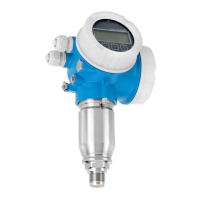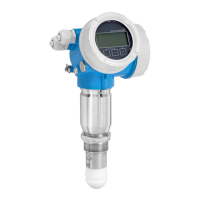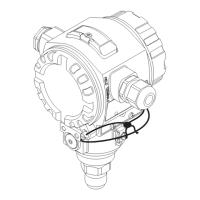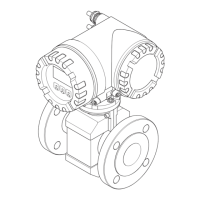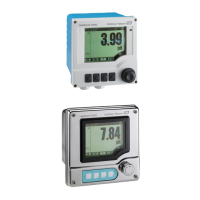Micropilot FMR56, FMR57
Endress+Hauser 9
Input
Measured variable
The measured variable is the distance between the reference point and the product surface.
The level is calculated based on "E", the empty distance entered.
Optionally, the level can be converted to other variables (volume, mass) by linearization (32 points).
Measuring range Maximum measuring range
FMR56 Maximum measuring range
For all versions 30 m (98 ft)
FMR57 Maximum measuring range
For all versions 70 m (230 ft)
Usable measuring range
The usable measuring range depends on the antenna size, the medium's reflective properties, the
installation position and any possible interference reflections.
Reduction of the max. possible measuring range by:
• Media with bad reflective properties (= low DC). For examples, see the table below.
• Angle of repose
• Extremely loose surfaces of bulk solids, e.g. bulk solids with low bulk weight in the case of
pneumatic filling.
• Formation of buildup, particularly of moist products.
Media group ε
r
Examples
A 1.6 to 1.9 • Plastic granulate
• White lime, special cement
• Sugar
B 1.9 to 2.5 Portland cement, plaster
C 2.5 to 4 • Grain, seeds
• Ground stones
• Sand
D 4 to 7 • Naturally moist (ground) stones, ores
• Salt
E > 7 • Metal powder
• Carbon black
• Coal dust
For very loose or loosened bulk solids, the lower group applies in each case.
For dielectric constants (DC values) of many media commonly used in various industries refer
to:
• the Endress+Hauser DC manual (CP01076F)
• the Endress+Hauser "DC Values App" (available for Android and iOS)

